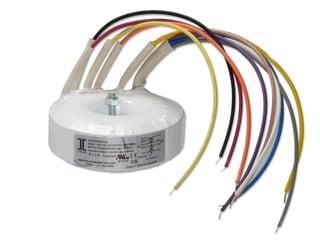When selecting a transformer for your project you may have come across medical grade transformers and wondered "what is the difference between a medical grade transformer and a standard transformer?".
 Transformers that are considered to be medical grade need to satisfy a number of additional safety guidelines and rules beyond the requirements needed for non-medical grade transformers.
Transformers that are considered to be medical grade need to satisfy a number of additional safety guidelines and rules beyond the requirements needed for non-medical grade transformers.
Medical Grade Requirements
Designed to protect caregivers, patients and the equipment used in their care, medical grade transformers are required to maintain strict adherence to the following:
- Maximums on earth, patient or enclosure leakage current
- Compliance to the harmonized IEC 60601 standard
- Minimums on creepage distance and air clearance
- Maximum temperature rise
Types of Medical Grade Transformers
Types of medical grade transformers include:
- Safety Ground Transformers: Safety ground transformers utilize standard transformer isolation. A safety shield between the primary and secondary coils, with insulation between the shield and each coil, maintains leakage current maximums. If the isolation fails, the AC input current is immediately redirected to ground through the shield. which should trip the overcurrent device.
- Double/Reinforced Insulation Transformers: Double or reinforced insulation transformers, which can be larger than standard transformers, have two or more means of insulation. Should one insulation layer fail, the others will maintain isolation.
Benefits of Medical Grade Transformers
- Reduce safety testing time allowing for faster to-market time
- Low leakage current design
- Offer guaranteed compliance with internationally recognized safety agency standards
- Compact size, reduced weight, and low power losses
- Built-in thermal protection
Learn More with Triad Magnetics
We put together a helpful infographic to act as a resource when considering medical grade transformers. You can click here to download the infographic or click the button below. And if you have questions about medical grade transformers or any other custom transformer product, contact us today!







